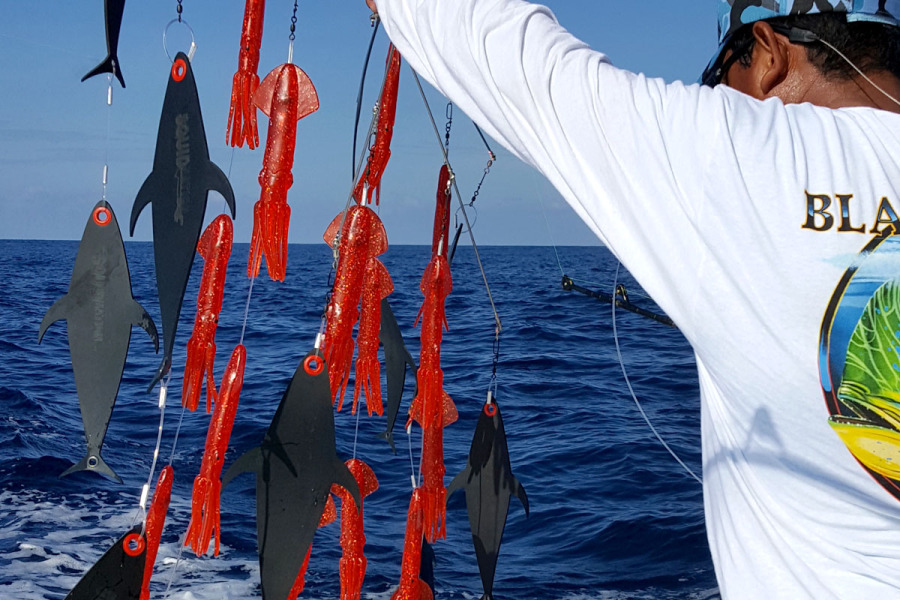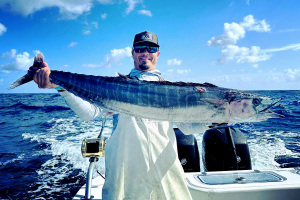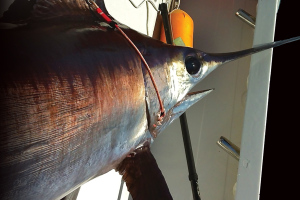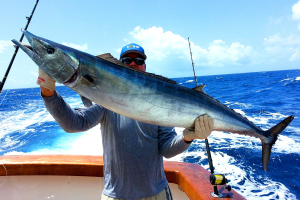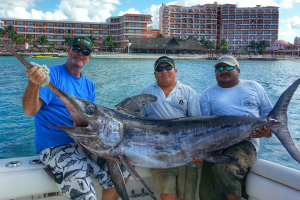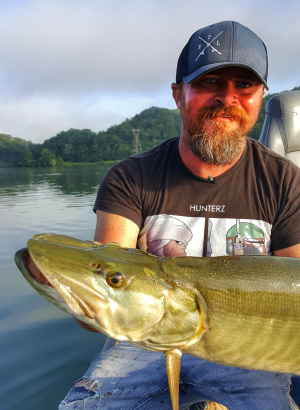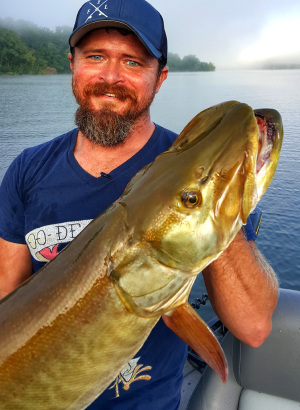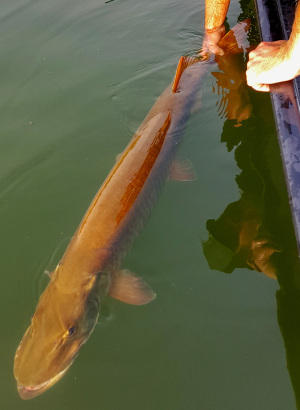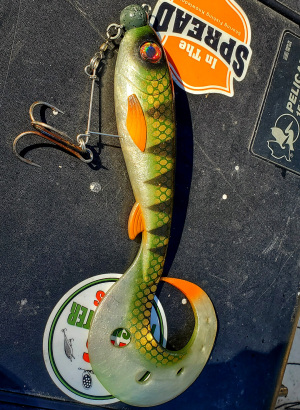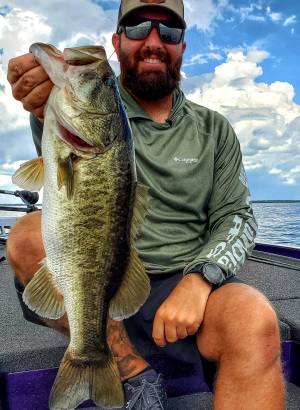The solunar calendar is a powerful tool for anglers, revealing the influence of moon phases and tides on fish behavior. By understanding these celestial rhythms, you can plan your fishing trips to coincide with peak activity periods, increasing your chances of a successful catch. Discover how to unlock the secrets of the tides and elevate your fishing game.

Solunar Calendar and Sport Fishing - Unlocking the Secrets of Tides
Key Points:
- The solunar calendar and tidal movements can significantly influence sport fishing success
- Understanding moon phases and their relation to tidal movements is crucial for leveraging the solunar theory
- Tidal changes create water movement, stirring up baitfish and triggering feeding activity in predator fish
- Interpreting solunar tables and identifying major/minor feeding periods can help plan fishing trips for optimal fish activity
- Combining the solunar calendar with other factors like weather and bait selection leads to a holistic approach to sport fishing
The movement of water, driven by tidal forces, plays a crucial role in the aggregation of baitfish, and the moon is a key influencer in this process. As the moon orbits the Earth, its gravitational pull, combined with that of the sun, creates the tidal cycle. During new and full moons, when the sun, moon, and Earth align, the gravitational forces are strongest, resulting in more extreme tidal ranges and stronger currents. These powerful currents can sweep baitfish along, concentrating them in areas where the water flow slows down or changes direction, such as channels, points, or eddies. The increased water movement also stirs up nutrients from the bottom, promoting plankton growth, which attracts baitfish seeking food. Additionally, some baitfish species synchronize their spawning events with specific lunar and tidal phases, leading to large aggregations during these times. The influence of the moon on tides and water movement creates a dynamic environment that affects the distribution and concentration of baitfish, which in turn attracts predatory fish. Anglers who understand this relationship between the moon, tides, and baitfish behavior can use this knowledge to their advantage, planning their fishing trips around the most favorable tidal phases and moon positions to increase their chances of success.
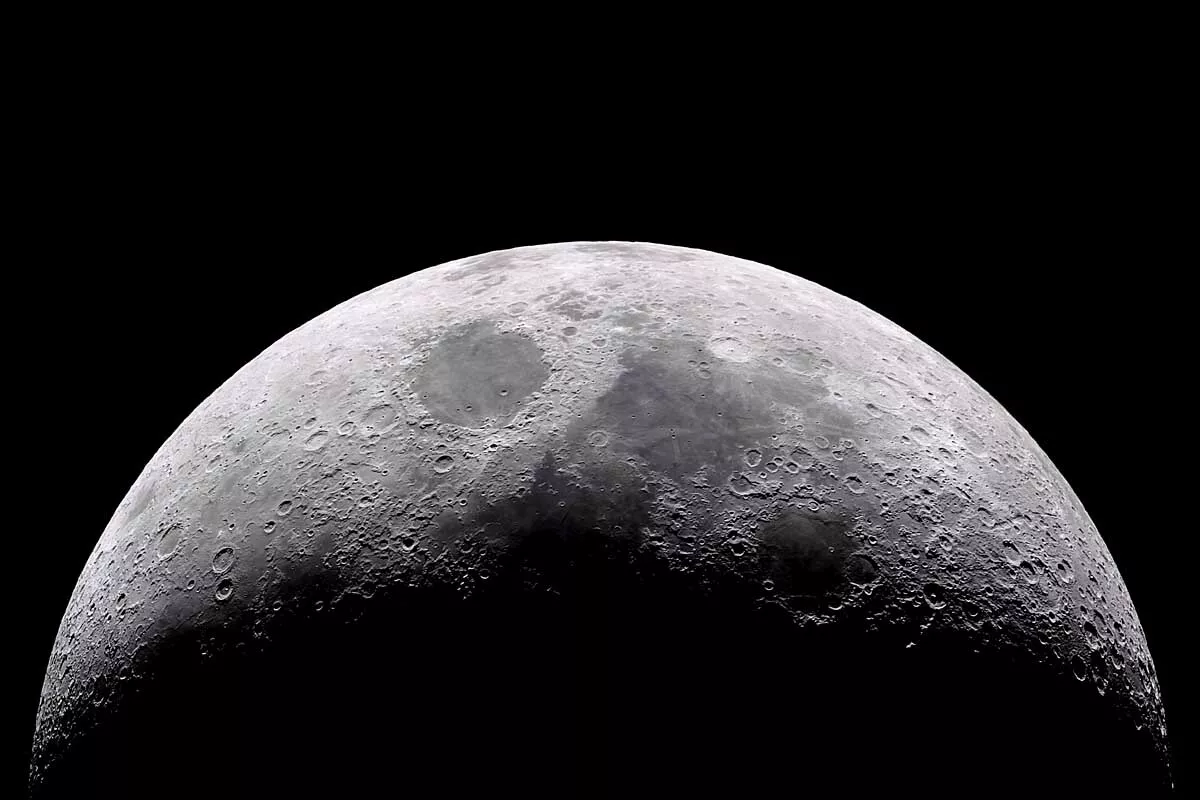
Understanding the Solunar Theory
The solunar theory, developed by John Alden Knight in 1926, suggests that the moon's position and phases influence the behavior and activity levels of fish and other wildlife. The theory is based on the concept that the combined gravitational forces of the moon and the sun affect the Earth's tides, which in turn influence fish activity.
During a new moon or full moon, when the sun and moon are aligned, their gravitational forces combine to create more pronounced tidal movements, known as spring tides. These spring tides are characterized by higher high tides and lower low tides. Conversely, during the first and last quarter moons, when the sun and moon are at right angles to each other, their gravitational forces partially cancel each other out, resulting in less extreme tidal movements called neap tides.
According to the solunar theory, these tidal fluctuations trigger increased fish activity during specific periods known as major and minor solunar periods. Major periods typically occur when the moon is directly overhead or underfoot, coinciding with sunrise and sunset. Minor periods, on the other hand, happen when the moon is rising or setting, aligning with midday and midnight.
Debate in the Scientific Community
Despite its popularity among anglers, the solunar theory has been the subject of debate within the scientific community. Some researchers argue that there is limited scientific evidence to support the direct correlation between moon phases, tidal movements, and fish behavior.
Anecdotal Evidence and Personal Experience
Notwithstanding the ongoing scientific debate, many experienced anglers firmly believe in the effectiveness of the solunar theory. They have witnessed firsthand how fishing during major and minor solunar periods can lead to increased catch rates and more productive fishing trips.
Anglers often recount stories of remarkable fishing sessions that coincided with peak solunar periods, attributing their success to the influence of the moon and tides. These personal experiences, passed down through generations of fishermen, have contributed to the enduring popularity of the solunar theory within the fishing community.
Moreover, some anglers argue that even if the solunar theory isn't scientifically proven, using it as a guideline for planning fishing trips can still be beneficial. By focusing on the predicted peak periods, anglers may increase their chances of being on the water when fish are more likely to be active, regardless of the underlying reasons behind that activity.
A Theory Open to Debate
While the scientific validity of the solunar theory remains a topic of debate, its influence on the fishing world is undeniable. Many anglers rely on solunar predictions to guide their fishing trips, and countless anecdotal accounts support its effectiveness.
Whether the correlation between moon phases, tidal movements, and fish behavior is direct or coincidental, the solunar theory provides a framework for understanding and potentially capitalizing on the complex interplay of factors that affect fishing success. As with any fishing strategy, the key is to combine the insights from the solunar theory with personal experience, adaptability, and a keen understanding of local conditions.
By keeping an open mind and using the solunar theory as a tool rather than a rigid rule, anglers can continue to explore the fascinating relationship between the moon, tides, and fish, all while enjoying the thrill of the catch and the beauty of the marine environment.

Tidal Movements and Baitfish Distribution
Tidal movements play a crucial role in the distribution and behavior of baitfish, which in turn influences the activity of predator fish. As the tide rises and falls, it creates a dynamic underwater environment that constantly reshapes the feeding opportunities available to fish.
During a rising tide, water flows into coastal areas, submerging previously exposed shorelines, flats, and marshes. This inflow of water can push baitfish, such as mullet, menhaden, or anchovies, closer to shore or into shallow estuaries and tidal creeks. Predator fish, like redfish, snook, or striped bass, often follow these baitfish concentrations, taking advantage of the abundant food source in the newly accessible areas.
On the other hand, a falling tide draws water away from the shore, forcing baitfish to retreat to deeper channels and pockets. Predators may congregate around these areas, intercepting the baitfish as they seek refuge in the receding water. This phenomenon can create exciting fishing opportunities near channel edges, drop-offs, or structure that provides ambush points for hungry fish.
Tidal Flushing and Nutrient Distribution
In addition to influencing baitfish movement, tidal flushing plays a vital role in the distribution of nutrients and organic matter in coastal ecosystems. As the tide rises, it carries nutrient-rich water from the ocean into estuaries, bays, and tidal rivers. This influx of nutrients stimulates the growth of phytoplankton and zooplankton, which form the foundation of the marine food web.
The increased availability of plankton attracts smaller baitfish, which in turn draws in larger predators. During these periods of tidal flushing, fish may become more active and aggressive as they capitalize on the sudden abundance of food.
Similarly, when the tide falls, it flushes out the nutrient-rich water, along with any decaying organic matter, from the shallow areas back into the ocean. This outflow can create a temporary feeding opportunity for fish that wait at the mouths of estuaries or near tidal inlets to intercept the outgoing prey.
Species-Specific Tidal Preferences
Different fish species have evolved to exploit various aspects of the tidal cycle based on their feeding habits, preferred habitat, and anatomical adaptations. Understanding these species-specific preferences can help anglers select the most productive fishing times and locations.
For example, bottom fish may become more active during low tides when the seafloor is exposed, and they can easily access crustaceans, mollusks, and other bottom-dwelling prey. Sight feeders, such as redfish or bonefish, may also prefer low tides, as the shallow water concentrates prey and makes them more visible.
Conversely, surface feeders like tarpon, mackerel, or bluefish may thrive in the turbulent waters of a rising tide. The incoming water can disorient and concentrate baitfish near the surface, making them vulnerable to attack from above.
Some species, like snook or striped bass, are known for their affinity to tidal currents. They may position themselves in ambush points near bridge pilings, jetties, or river mouths, waiting for the tidal flow to deliver disoriented prey directly to them.
Adapting Fishing Techniques to Tidal Conditions
To maximize success, anglers should adapt their fishing techniques to the prevailing tidal conditions and the preferences of their target species. This may involve adjusting the depth of their presentation, selecting appropriate lures or baits, or focusing on specific structural features that are likely to hold fish during a given tidal phase.
For instance, during a falling tide, anglers might concentrate on fishing deeper channels, troughs, or holes where fish are likely to seek refuge as the water recedes. Conversely, during a rising tide, they may target the edges of flats, oyster bars, or submerged vegetation that become accessible to fish as the water level rises.
In conclusion, understanding the impact of tidal movements on fish behavior is essential for any serious saltwater angler. By aligning their fishing efforts with the most favorable tidal conditions for their target species, anglers can significantly increase their chances of success and enjoy more productive days on the water.
Be A Smarter Fisherman - Learn From Some of the Best
Interpreting Solunar Tables and Lunar Fishing Calendars
Solunar tables and lunar fishing calendars are essential tools for anglers looking to leverage the solunar theory in their fishing efforts. These resources provide a wealth of information on the predicted peak fishing times based on the moon's phase and position relative to your specific location.
When examining a solunar table, you'll typically find several key pieces of information, including the date, the moon's phase, and the predicted major and minor fishing periods for each day. The major periods, often indicated by a solid circle or a fish symbol, are the times when fish activity is expected to be at its highest. These periods usually occur around sunrise and sunset, coinciding with the moon's position directly overhead or underfoot.
Minor periods, represented by a hollow circle or a half-fish symbol, are the times of day when fish activity is still heightened but to a lesser extent than during major periods. Minor periods typically align with moonrise and moonset, occurring around midday and midnight.
To get the most out of these resources, consider the following tips:
- Choose a reputable source: Ensure that you're using a reliable solunar table or lunar fishing calendar specific to your geographic location. Some popular options include Tides4Fishing, Solunar Time Forecast, and TideCharts.
- Plan ahead: Consult the solunar predictions well in advance of your planned fishing trip. This will allow you to identify the most promising dates and times based on the alignment of major periods with favorable tidal movements and weather conditions.
- Customize your approach: Take into account the specific habits and preferences of your target species. Some fish may be more active during the day, while others are low-light predators. Adjust your fishing times accordingly, prioritizing the major or minor periods that best suit your targeted species.
Aligning Solunar Periods with Tidal Movements
In addition to considering the solunar predictions, it's crucial to factor in the local tidal movements when planning your fishing trip. The combination of peak solunar activity and optimal tidal conditions can significantly enhance your chances of success.
For inshore fishing, pay attention to the tidal stage and the direction of the tidal flow. Many inshore species, such as snook, redfish, and tarpon, are strongly influenced by tidal currents and tend to feed more actively during specific stages of the tide.
For example, if you're targeting snook in mangrove-lined creeks, you might plan your trip to coincide with a major solunar period during the incoming tide. The rising water will push baitfish into the mangroves, attracting hungry snook to the area. Position yourself near ambush points, such as creek mouths or deep pockets, and present your bait or lure in the path of the tidal current.
Similarly, for offshore fishing, consider the tidal effects on underwater structure and baitfish movements. During a falling tide, fish may concentrate around offshore reefs, wrecks, or ledges as the outgoing current carries baitfish away from the shallows. Targeting these areas during a major solunar period could lead to explosive action from species like grouper, snapper, or kingfish.
Adapting to Real-Time Conditions
While the solunar calendar and tidal predictions provide a solid foundation for planning your fishing trips, it's essential to remain adaptable and responsive to real-time conditions on the water.
Weather patterns, water clarity, and baitfish presence can all influence fish behavior and feeding activity. A sudden change in wind direction, a drop in barometric pressure, or an influx of murky water can alter the effectiveness of even the most promising solunar periods.
As you gain experience using the solunar calendar, you'll develop a better understanding of how these variables interact and impact your fishing success. Be prepared to adjust your tactics, change your location, or switch up your bait or lure presentation based on the conditions at hand.
Remember, the solunar theory is not a guarantee of fishing success but rather a tool to help you make informed decisions and tilt the odds in your favor. By combining the insights from solunar predictions with your own knowledge, skills, and adaptability, you'll be well-equipped to capitalize on the best fishing opportunities and create lasting memories on the water.
The Solunar Calendar - A Valuable Addition to Your Fishing Arsenal
Incorporating the solunar calendar into your sport fishing strategy can be a game-changer, helping you unlock the secrets of tides and maximize your chances of success. By understanding the intricate relationship between moon phases, tidal movements, and fish behavior, you can plan your trips to coincide with the most promising periods and locations.
The solunar calendar acts as a roadmap, guiding you towards the optimal fishing times based on the moon's influence on tidal fluctuations and fish activity. It provides valuable insights into the daily and monthly rhythms of the underwater world, allowing you to synchronize your efforts with the natural cycles that govern fish behavior.
Armed with this knowledge, you can make informed decisions about when and where to fish, focusing your energy on the periods when fish are most likely to be active and feeding. Whether you're an inshore enthusiast targeting redfish in the marshes or an offshore adventurer seeking trophy marlin, the solunar calendar can help you identify the prime opportunities for success.
Combining Solunar Insights with Personal Experience and Skill
While the solunar calendar is a powerful tool, it's important to remember that it's not a magic solution guaranteeing a box full of fish every time. Fishing is a dynamic pursuit, influenced by a multitude of factors beyond the moon and tides, such as weather patterns, water conditions, and fish populations.
To truly excel in your sport fishing endeavors, it's essential to combine the insights from the solunar theory with your own skills, experience, and local knowledge. The solunar calendar provides a starting point, but it's up to you to refine your approach based on the unique characteristics of your target species and the specific waters you fish.
As you spend more time on the water and pay attention to the solunar predictions, you'll begin to develop a keen sense of how these factors interact and influence fish behavior in your area. You'll learn to recognize the subtle signs that indicate when fish are most likely to be active, such as changes in water color, baitfish presence, or bird activity.
Moreover, your personal fishing skills, such as bait presentation, lure selection, and boat positioning, will play a crucial role in capitalizing on the opportunities identified by the solunar calendar. The best fishing periods won't yield results if your techniques are off or if you're not presenting your bait or lure in a manner that entices fish to strike.
Embracing the Wonder of the Tides and the Moon
Beyond its practical applications, the solunar calendar also serves as a reminder of the incredible complexity and beauty of the marine environment. As you stand on the deck of your boat, watching the tide ebb and flow and the moon rise above the horizon, take a moment to appreciate the intricate dance of celestial bodies and earthly waters.
The tides, driven by the gravitational pull of the moon and sun, shape the coastal landscape and the lives of countless marine organisms. They dictate the rhythms of the ocean, influencing everything from the growth of seagrass beds to the migrations of fish and the foraging patterns of shorebirds.
By tapping into this ancient knowledge and aligning your fishing efforts with the lunar cycle, you become a part of this grand ecological symphony. You're not just a passive observer but an active participant in the timeless interplay between predator and prey, water and land, moon and tide.
In those magical moments when everything aligns – when the solunar prediction, the tidal flow, and your own skills converge – the results can be truly unforgettable. The line will sing, the reel will scream, and the fish will dance on the end of your line, etching memories that will last a lifetime.
So, embrace the solunar calendar as a valuable addition to your sport fishing arsenal, but never lose sight of the wonder and mystery that make fishing such a captivating pursuit. Let the moon and the tides guide you, but always remember that the true joy of fishing lies in the journey, the connection to nature, and the thrill of the unknown that awaits with each cast.

